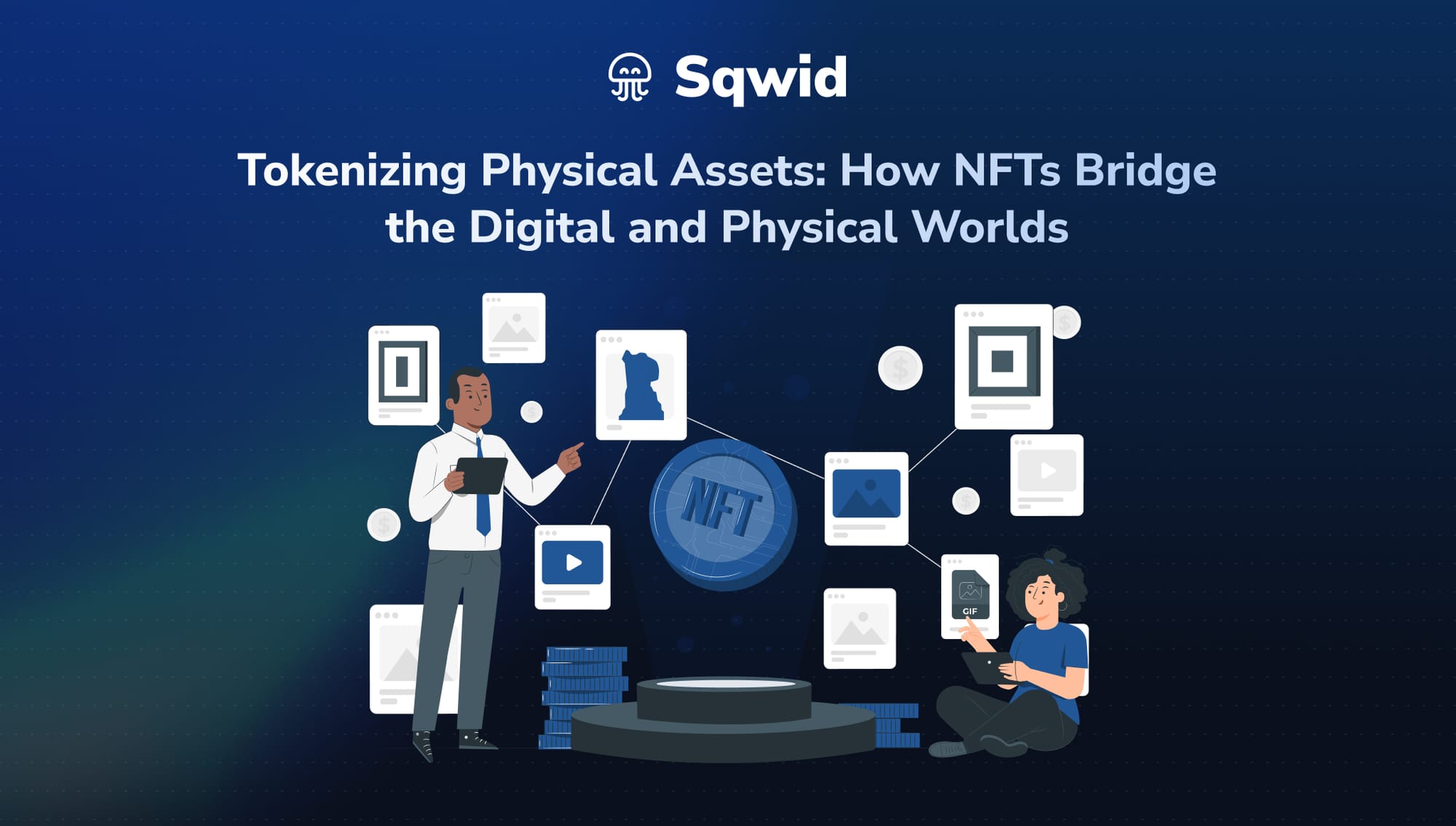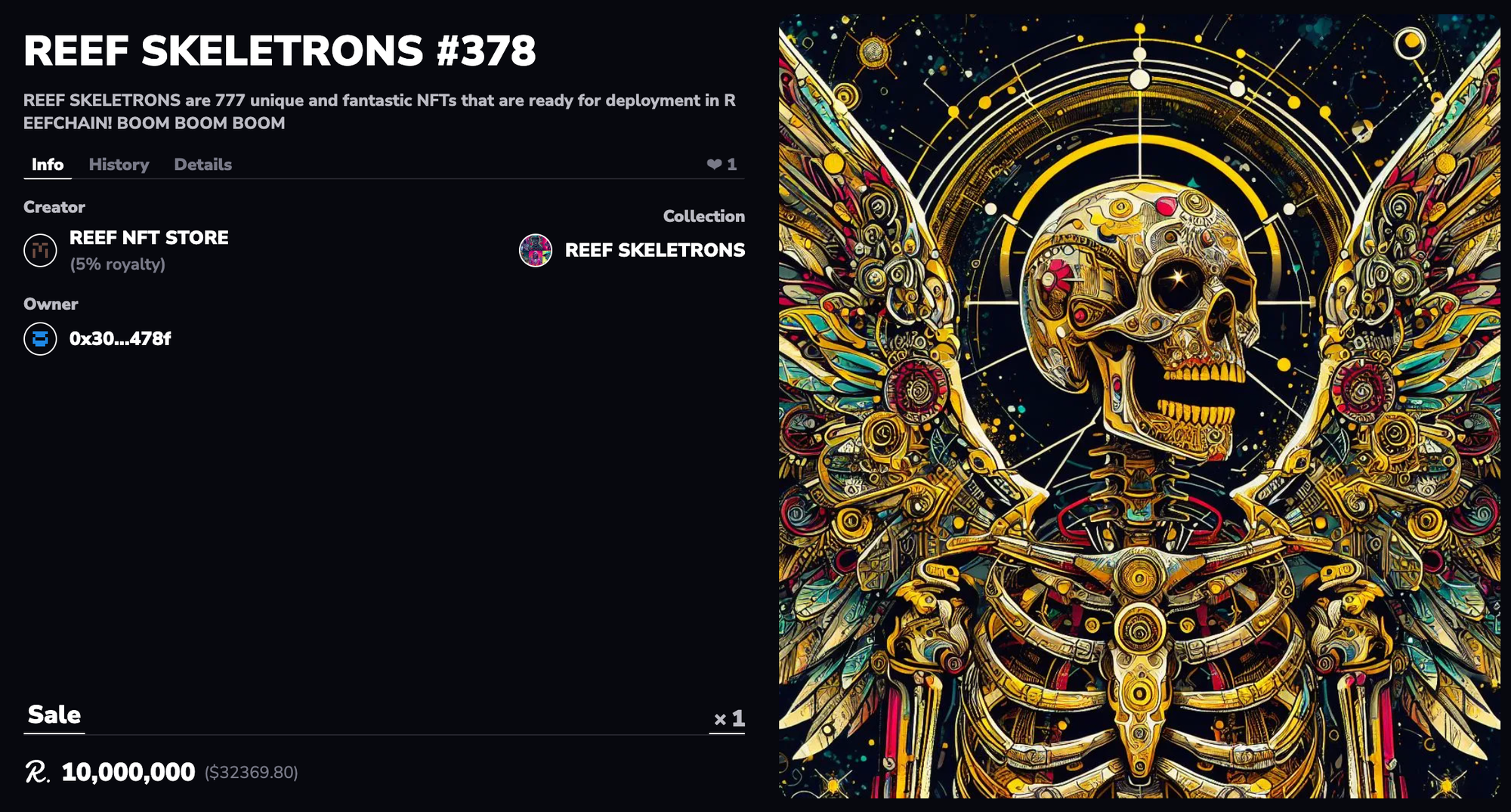Tokenizing Physical Assets: How NFTs Bridge the Digital and Physical Worlds

In the ever-evolving landscape of digital innovation, the concept of tokenizing physical assets through Non-Fungible Tokens (NFTs) has emerged as a groundbreaking intersection between the tangible and the digital realms. NFTs, which gained mainstream attention primarily within the realm of digital art, are now expanding their horizons to revolutionize the way we perceive, own, and trade physical assets. This fusion of the physical and digital worlds not only holds immense promise for creators and collectors but also has the potential to disrupt traditional industries.
What are NFTs and How Do They Work?

Before delving into the realm of tokenizing physical assets, it's essential to understand the fundamentals of Non-Fungible Tokens. Unlike cryptocurrencies such as Bitcoin or Ethereum, which are fungible and interchangeable, NFTs are unique digital assets that represent ownership or proof of authenticity of a particular item or piece of content. This uniqueness is encoded in blockchain technology, which ensures immutability and transparency.
Each NFT contains metadata that provides details about the asset it represents, such as its creator, owner, and any associated royalties. This metadata is what distinguishes one NFT from another and confers value upon it. NFTs are typically bought, sold, and traded on specialized online marketplaces, utilizing cryptocurrency as a means of exchange.
Expanding the Boundaries: Tokenizing Physical Assets
While NFTs have predominantly been associated with digital creations like artwork, music, and collectibles, their potential extends far beyond the confines of the virtual world. The concept of tokenizing physical assets involves representing real-world items, such as real estate, luxury goods, or even intellectual property, as NFTs on the blockchain.

One of the primary advantages of tokenizing physical assets through NFTs is the ability to establish verifiable ownership and provenance in a digital format. By linking a unique token to a physical item, authenticity and ownership rights can be securely recorded on the blockchain, mitigating the risk of fraud or counterfeit.
Unlocking New Possibilities
The implications of tokenizing physical assets with NFTs are profound and far-reaching. Let's explore some of the ways in which this convergence of the digital and physical worlds is reshaping industries and opening up new opportunities:
- Fractional Ownership: NFTs enable the fractional ownership of high-value physical assets, allowing individuals to invest in real estate, fine art, or vintage cars without needing to purchase the entire asset. This democratization of ownership can lower barriers to entry and provide investment opportunities to a broader range of participants.
- Enhanced Liquidity: By tokenizing physical assets, illiquid assets such as real estate can be transformed into liquid assets that can be easily bought, sold, or traded on digital marketplaces. This increased liquidity could revolutionize the way we perceive and transact with traditionally hard-to-sell assets.
- Provenance and Authenticity: NFTs provide an immutable record of ownership and provenance, enhancing transparency and trust in supply chains for luxury goods, art, and collectibles. This transparency not only safeguards against counterfeit products but also enables consumers to verify the authenticity and ethical sourcing of the items they purchase.
- Monetization of Intellectual Property: Creators and rights holders can tokenize their intellectual property as NFTs, enabling them to retain ownership rights and receive royalties whenever their creations are bought, sold, or licensed. This opens up new revenue streams for artists, musicians, writers, and other content creators in a digital-first economy.
- Dynamic Utility: NFTs can imbue physical assets with dynamic utility, allowing owners to unlock additional features, experiences, or perks through smart contracts. For example, owners of tokenized concert tickets could gain access to exclusive backstage passes or digital content related to the event.
Challenges and Considerations
While the potential of tokenizing physical assets with NFTs is vast, it's essential to acknowledge and address the challenges and considerations associated with this emerging paradigm. These may include regulatory compliance, interoperability standards, environmental concerns related to blockchain energy consumption, and ensuring equitable access and representation within digital ecosystems.

The Future of Tokenized Assets
As we stand at the cusp of a new era where the digital and physical worlds converge, the tokenization of physical assets through NFTs represents a transformative shift in how we perceive, own, and interact with valuable assets. From art galleries to real estate markets, industries across the spectrum are beginning to explore the potential of this innovative technology.
As with any disruptive innovation, the journey towards mainstream adoption may be accompanied by obstacles and uncertainties. However, the promise of enhanced transparency, liquidity, and democratization offered by tokenized assets has the potential to reshape economies and empower individuals in ways we are only beginning to comprehend. As we navigate this exciting frontier, one thing is certain: the bridge between the digital and physical worlds is rapidly expanding, ushering in a new era of possibility and opportunity for creators, collectors, and investors alike.
Sqwid App (Sqwid)
Sqwid is an advanced NFT marketplace with an attractive UI and some radically distinctive features like loans against NFTs, support for files up to 100 MB, using IPFS for file storage, the lowest commissions, custom royalty splits, and more! With such features, Sqwid is highly competitive against many popular NFT marketplaces.
Website | X | Telegram
Reef Chain
Reef is an EVM-first blockchain designed to make Web3 accessible for the next billion users. Reef offers high scalability, affordable transactions and utilizes Nominated Proof of Stake, extensible EVM, and on-chain upgradability. Reef is the future blockchain for NFTs, DeFi, and gaming. It can easily accommodate the needs of the future of Web3 development. Reef is an ideal blend of old and new, a trait that makes it eternal and timeless. 🐠 Making Web3 accessible to the next billion users!
Website | Instagram | X | YouTube | Telegram | Discord | Reddit
